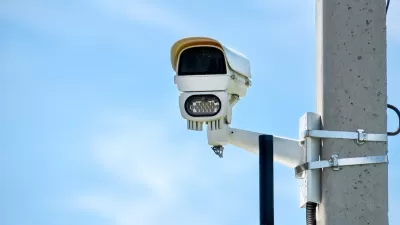The New Jersey city implemented simple yet impactful changes to eliminate traffic fatalities.

While traffic deaths continue to rise in much of the United States, one New Jersey city is bucking the trend. Hoboken’s Vision Zero plan, in fact, is working as intended. According to an article by Bradley Brownell in Jalopnik, “the city hasn’t seen a single traffic death since January 2017, and according to Bloomberg, traffic injuries are down about 40 percent in that same period.”
The plan boils down to a few simple changes in the tiny city on the Hudson; lower speed limits, protected bike lanes, improved crosswalks, and curb extensions. That’s it.
While small, Hoboken shows how a city can make simple, low-cost changes that make a big impact on the lives of their residents. Local leaders built bike lanes, brought bike share to the city, and redesigned crosswalks for improved visibility and pedestrian safety. “The biggest change, however, has been the city’s commitment to speed reduction. In 2022 Hoboken lowered its city speed limit from 30 miles per hour to just 20,” making it significantly more likely for pedestrians to survive collisions.
FULL STORY: Traffic Fatalities Are Up Almost Everywhere, But Hoboken Hasn't Had One In Nearly 7 Years

Planetizen Federal Action Tracker
A weekly monitor of how Trump’s orders and actions are impacting planners and planning in America.

Maui's Vacation Rental Debate Turns Ugly
Verbal attacks, misinformation campaigns and fistfights plague a high-stakes debate to convert thousands of vacation rentals into long-term housing.

Cuomo Is the Candidate of Both NIMBYs and Developers. What Gives?
In the New York City mayoral race, odd bedfellows align to preserve the housing status quo.

The Subversive Car-Free Guide to Trump's Great American Road Trip
Car-free ways to access Chicagoland’s best tourist attractions.

San Antonio and Austin are Fusing Into one Massive Megaregion
The region spanning the two central Texas cities is growing fast, posing challenges for local infrastructure and water supplies.

Charlottesville Temporarily Has No Zoning Code
A judge ordered the Virginia city to throw out its newly revised zoning code, leaving permitting for new development in legal limbo.
Urban Design for Planners 1: Software Tools
This six-course series explores essential urban design concepts using open source software and equips planners with the tools they need to participate fully in the urban design process.
Planning for Universal Design
Learn the tools for implementing Universal Design in planning regulations.
Heyer Gruel & Associates PA
JM Goldson LLC
Custer County Colorado
City of Camden Redevelopment Agency
City of Astoria
Transportation Research & Education Center (TREC) at Portland State University
Jefferson Parish Government
Camden Redevelopment Agency
City of Claremont





























